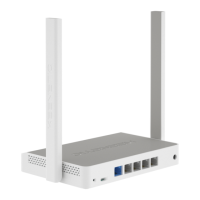Wi-Fi Protected Access and Wi-Fi Protected Access II (WPA2) are two security protocols and
security certication programs developed by the Wi-Fi Alliance to secure
wireless computer networks. The Alliance dened these in response
to serious weaknesses researchers had found in the previous system,
WEP. WPA advantages are enhanced data security and tightened access
control for wireless networks. Important characteristic is the
compatibility between multiple wireless devices at the hardware level
as well as at software level.
Wi-Fi Protected Setup provides an industry-wide mechanism to set up and congure networks
for home and small ofce (SOHO) environments. Wi-Fi Protected Setup
enables typical users who possess little understanding of traditional
Wi-Fi conguration and security settings to easily congure new
wireless networks, to add new devices and to enable security.
Wired Equivalent Privacy is a security algorithm for IEEE 802.11 wireless networks. WEP,
recognizable by the key of 10 or 26 hexadecimal digits, is widely in use
and is often the rst security choice presented to users by router
conguration tools. In 2004, with the ratication of the full 802.11i
standard (i.e. WPA2), the IEEE declared that both WEP-40 and WEP-104
have been deprecated.
Extended Authentication or XAUTH, provides an additional level of authentication by allowing
the IPsec gateway to request extended authentication from remote
users, thus forcing remote users to respond with their credentials
before being allowed access to the VPN.
Yandex.DNS service of Yandex company to protect home network. Provides three
ltering modes:
• no ltering: resources are not blocked
• safe mode: stops malicious and phishing websites
• family mode: stops malicious and phishing websites, as well as
resources for adults
Command Reference Guide — Keenetic Lite (KN-1310)
298
Glossary

